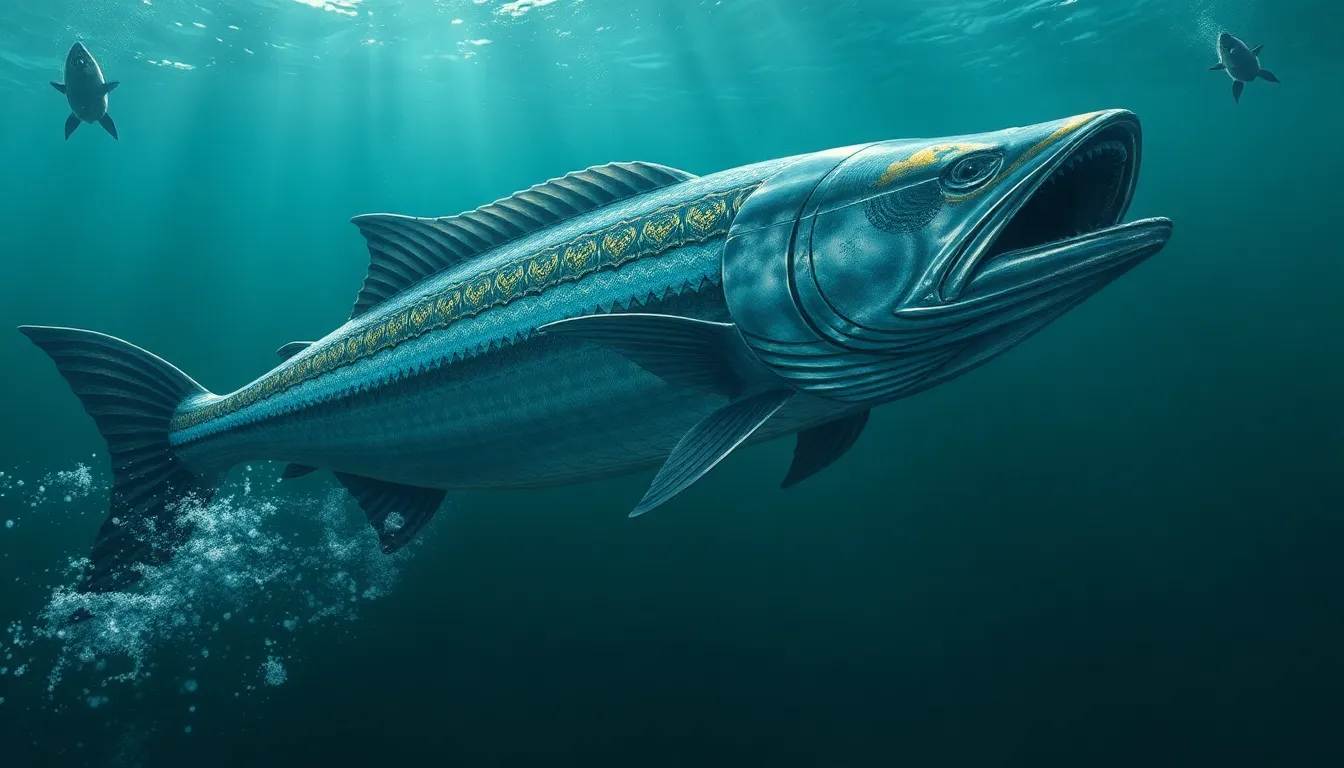The Sacred Tarpon: Strength of the Sea in Folklore
Introduction to the Sacred Tarpon
The tarpon, a majestic fish known for its acrobatic leaps and shimmering scales, holds a significant place in the lore and traditions of various cultures around the world. Often referred to as the “silver king,” the tarpon is not only valued for its sporting qualities but also revered for its cultural and spiritual importance. In many coastal communities, the tarpon symbolizes resilience, strength, and a deep connection to the sea.
Historical Context of the Tarpon in Folklore
Throughout history, the tarpon has been mentioned in the oral traditions and stories of many indigenous cultures. Early accounts from Native American tribes along the Atlantic and Gulf coasts highlight the importance of the tarpon as a source of sustenance and as a creature of great respect.
- Indigenous Cultures: Tribes such as the Seminole and the Miccosukee revered the tarpon not only as a food source but as a symbol of strength and survival.
- Coastal Communities: In communities from Florida to the Caribbean, the tarpon has been a staple in fishing practices and has been woven into the cultural fabric of life by shaping economies and traditions.
Mythological Representations of the Tarpon
In many mythologies, the tarpon is depicted as a formidable creature, often embodying themes of strength and resilience. Various legends reveal how the tarpon is viewed as a guardian of the sea, possessing powers that can influence weather and tides.
- Symbolism: The tarpon is frequently associated with the following:
- Strength
- Resilience
- Transformation
Cultural Significance of the Tarpon in Local Traditions
Many coastal communities celebrate the tarpon through festivals, rituals, and events that honor this incredible fish. These celebrations not only pay homage to the tarpon but also strengthen community bonds and cultural identity.
- Festivals: Events such as the Tarpon Fishing Tournament in Boca Grande, Florida, attract anglers and spectators who celebrate the tarpon’s legacy.
- Rituals: Some communities perform rituals to bless the waters and ensure a healthy tarpon population, highlighting the fish’s role in their livelihoods.
The Tarpon in Indigenous Beliefs
For many indigenous tribes, the tarpon is more than just a fish; it is a revered being closely tied to their spiritual beliefs. The relationship between the tarpon and indigenous deities often reflects a profound respect for nature.
- Tribes: Specific tribes, such as the Calusa and the Taino, have incorporated the tarpon into their mythologies, often portraying it as a messenger or a protector.
- Spiritual Connections: The tarpon is believed to carry messages from the spirit world, and its presence is seen as an omen of good fortune.
Tarpon as a Symbol of Strength and Perseverance
The narratives surrounding the tarpon often depict it as a symbol of overcoming adversity. Stories of fishermen battling with tarpon reflect themes of struggle, respect, and perseverance.
- Fishermen Tales: Many fishermen recount their experiences of catching tarpon, describing the thrill and challenge it presents. These stories often include themes of:
- Respect for the fish
- Lessons learned from nature
- Connection to heritage and tradition
Ecological Role of the Tarpon in Folklore
The tarpon also plays a crucial role in the marine ecosystem, and its presence is often seen as an indicator of the health of coastal waters. Folklore surrounding the tarpon often reflects the interconnectedness of all marine life.
- Environmental Folklore: Stories that emphasize the need to protect the tarpon and its habitat highlight broader themes of environmental stewardship.
- Health of the Sea: Folklore often teaches that the well-being of the tarpon is tied to the overall health of the ocean, making it a symbol of marine conservation.
Modern Interpretations of Tarpon Folklore
In contemporary culture, the rich folklore surrounding the tarpon is being reinterpreted by artists, writers, and filmmakers. This resurgence not only preserves the stories but also brings them to new audiences.
- Art and Literature: Many local artists create works inspired by tarpon folklore, capturing its beauty and significance in visual arts and storytelling.
- Tourism and Conservation: Tarpon fishing has become a significant aspect of ecotourism, with many conservation efforts focusing on preserving both the fish and its cultural heritage.
Challenges to Tarpon Populations and Cultural Heritage
Despite its revered status, the tarpon faces numerous challenges today, including overfishing, habitat destruction, and environmental changes. These threats not only impact the fish but also the cultural narratives associated with it.
- Threats: Key challenges include:
- Overfishing and illegal catch
- Pollution and habitat loss
- Climate change affecting migration patterns
- Impact on Folklore: As the populations decline, the stories and traditions surrounding the tarpon may also fade, emphasizing the need for concerted conservation efforts.
Conclusion: The Enduring Legacy of the Sacred Tarpon
The legacy of the sacred tarpon continues to resonate in modern society, reflecting a deep respect for marine life and the traditions that surround it. As we look to the future, it is vital to recognize the importance of conserving both the tarpon and the cultural heritage it represents. By honoring the sacred tarpon, we not only preserve a vital species but also the rich tapestry of stories and traditions that connect us to the sea.



